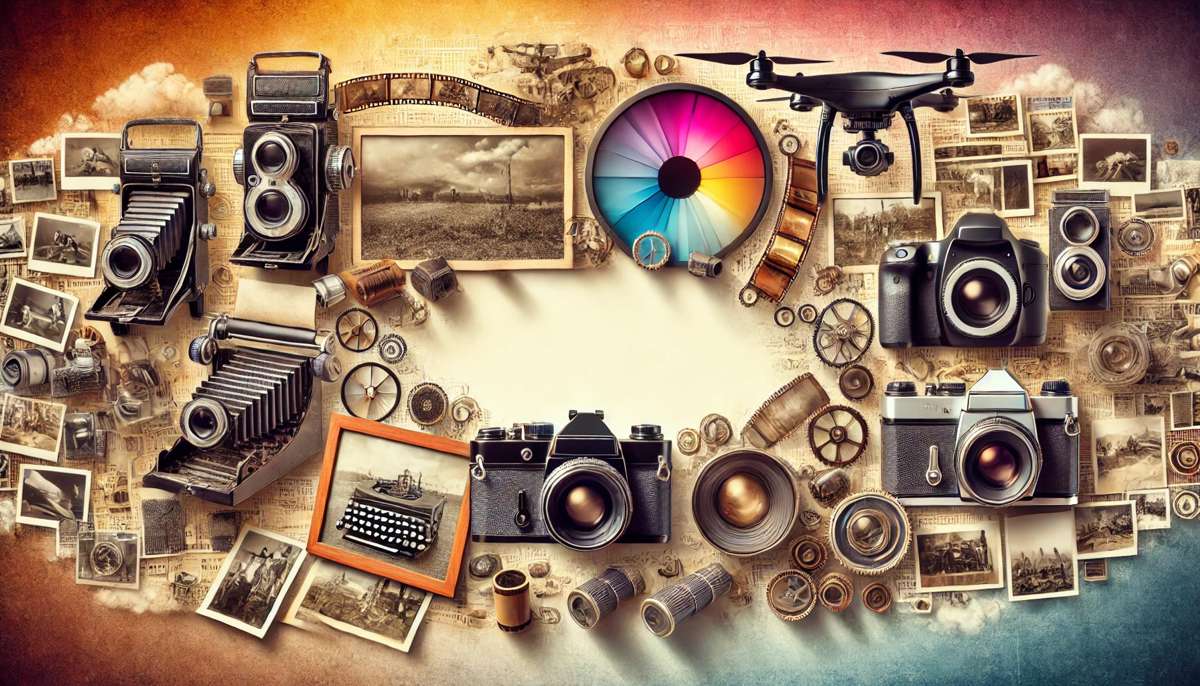Celebrating World Photography Day from Film to Digital Masterpieces
World Photography Day, celebrated annually on August 19th, honours the remarkable journey of photography from its humble beginnings to the sophisticated art form it is today.
From the earliest grainy images to high-definition digital snapshots, the evolution of photography mirrors the pace of human innovation, creativity, and our endless curiosity to capture the world around us.
As we celebrate World Photography Day, it’s worth exploring how this medium has transformed, the influential figures who left a mark on its history, and how photography continues to shape our perspective on life.
The Significance of World Photography Day
World Photography Day isn’t just about photographers; it’s about appreciating how photography influences our daily lives, documents history, and connects cultures. Established to commemorate the unveiling of the daguerreotype process to the public on August 19th, 1839, this day offers a moment to celebrate both the art and science behind every click of the shutter.
The Evolution of Photography: From Hours to Instants
Photography has come a long way since Joseph Nicéphore Niépce captured the world’s first known photograph in the 1820s. Back then, creating a single image was no small feat—it required an eight-hour exposure. Fast forward to today, and the process has been compressed into an instant, thanks to cutting-edge digital technology.
The earliest attempts in the field involved devices like the camera obscura, an optical invention used for centuries before it was paired with light-sensitive materials. The 19th century saw the invention of the daguerreotype and later the calotype by William Henry Fox Talbot, which significantly reduced exposure times. The collodion process, popularised by Frederick Scott Archer, enabled sharper images, paving the way for modern photography. These breakthroughs allowed photographers to explore new creative frontiers, and by the 20th century, cameras became accessible to the public.
In today’s world, advancements in technology have democratised photography. Drones capture aerial landscapes that were once out of reach, while DSLR cameras and GoPros have become staples for both amateur and professional photographers. Smartphones now house sophisticated cameras that can produce images with resolutions exceeding 50 megapixels. The immediacy of digital photography, combined with the boundless potential of editing software, has transformed the medium into an everyday tool for storytelling and creative expression.
Pioneers and Legends: Influential Photographers Who Shaped the Craft
Throughout the history of photography, certain visionaries have profoundly shaped the medium, each leaving a legacy that continues to inspire new generations of photographers. The 20th century, in particular, was a golden era for photography, producing some of the most iconic images ever captured.
Ansel Adams: The Master of Landscape Photography
Few names are as synonymous with landscape photography as Ansel Adams. Known for his striking black-and-white images of the American wilderness, particularly Yosemite National Park, Adams was a master of capturing the sublime in nature. He played a key role in promoting conservation through his work, using photography as a tool for environmental advocacy.
Adams believed black-and-white imagery was more expressive than colour, allowing him to focus on contrast, texture, and the intricate details of the natural world.
Richard Avedon: Redefining Fashion and Portrait Photography
In the realm of fashion and portrait photography, Richard Avedon’s influence is undeniable. Working with icons like Marilyn Monroe, The Beatles, and Martin Luther King Jr., Avedon’s style combined artistic flair with a deep psychological insight into his subjects.
His ability to evoke raw emotion through minimalist compositions set new standards in both fashion and editorial photography. Avedon’s approach was ahead of its time, breaking away from traditional glamour and introducing a more personal, often stark, portrayal of his subjects.
David Bailey: The Chronicler of Swinging London
David Bailey’s rise from East London’s working-class roots to the heights of fashion photography during the 1960s is the stuff of legend. At British Vogue, Bailey’s unconventional style captured the spirit of the Swinging Sixties, photographing some of the most famous faces in music, fashion, and art.
His empathetic approach, a result of his upbringing, allowed him to portray his subjects in a refreshingly authentic light. Bailey’s rebellious style helped define a new era in photography, making him one of the most influential photographers in British history.
Photography Today: A Blend of Art, Technology, and Accessibility
Photography today is more accessible than ever. Social media platforms like Instagram and TikTok have turned everyone with a smartphone into a potential photographer, enabling people to share their visual stories with the world. Meanwhile, the rise of artificial intelligence (AI) in photography is taking the industry into uncharted territories, automating tasks such as focus adjustments, editing, and even generating photorealistic images.
However, despite these technological advancements, the essence of photography remains unchanged—it’s about capturing a moment, evoking emotion, and sharing a unique perspective. Whether it’s a landscape, a fashion shoot, or a candid snapshot, photography continues to be a powerful means of expression.
Honouring Photography’s Legacy and Future
As we celebrate World Photography Day, it’s a chance to reflect on how far photography has come—from painstakingly long exposures to today’s instant digital captures. It’s also an opportunity to acknowledge the photographers, both past and present, who’ve pushed the boundaries of what’s possible with a camera.
The future of photography looks bright as innovation continues to drive new creative possibilities. From the emergence of 3D photography to advancements in drone technology, the next chapter in photography’s story promises to be as transformative as the last.
Celebrating the Power of Photography
Photography has become an integral part of human culture, enabling us to document, communicate, and connect. On World Photography Day, it’s worth taking a moment to appreciate not only the tools and techniques that have developed but also the shared human experiences captured through the lens.
Whether you’re a professional photographer or simply someone who enjoys snapping pictures on your phone, remember that every image tells a story, and those stories make the world a richer place.










